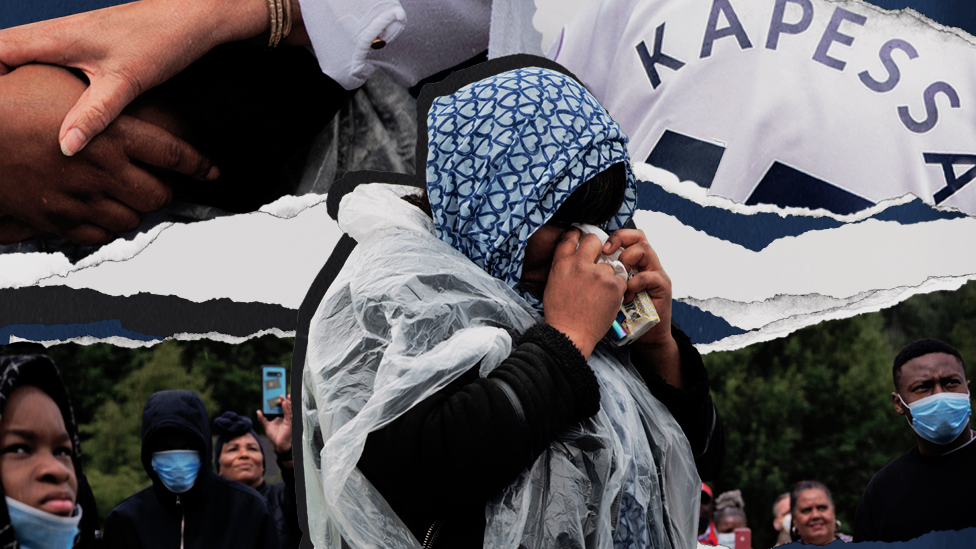How warnings about Heni and Jan's killer were missed
- Published
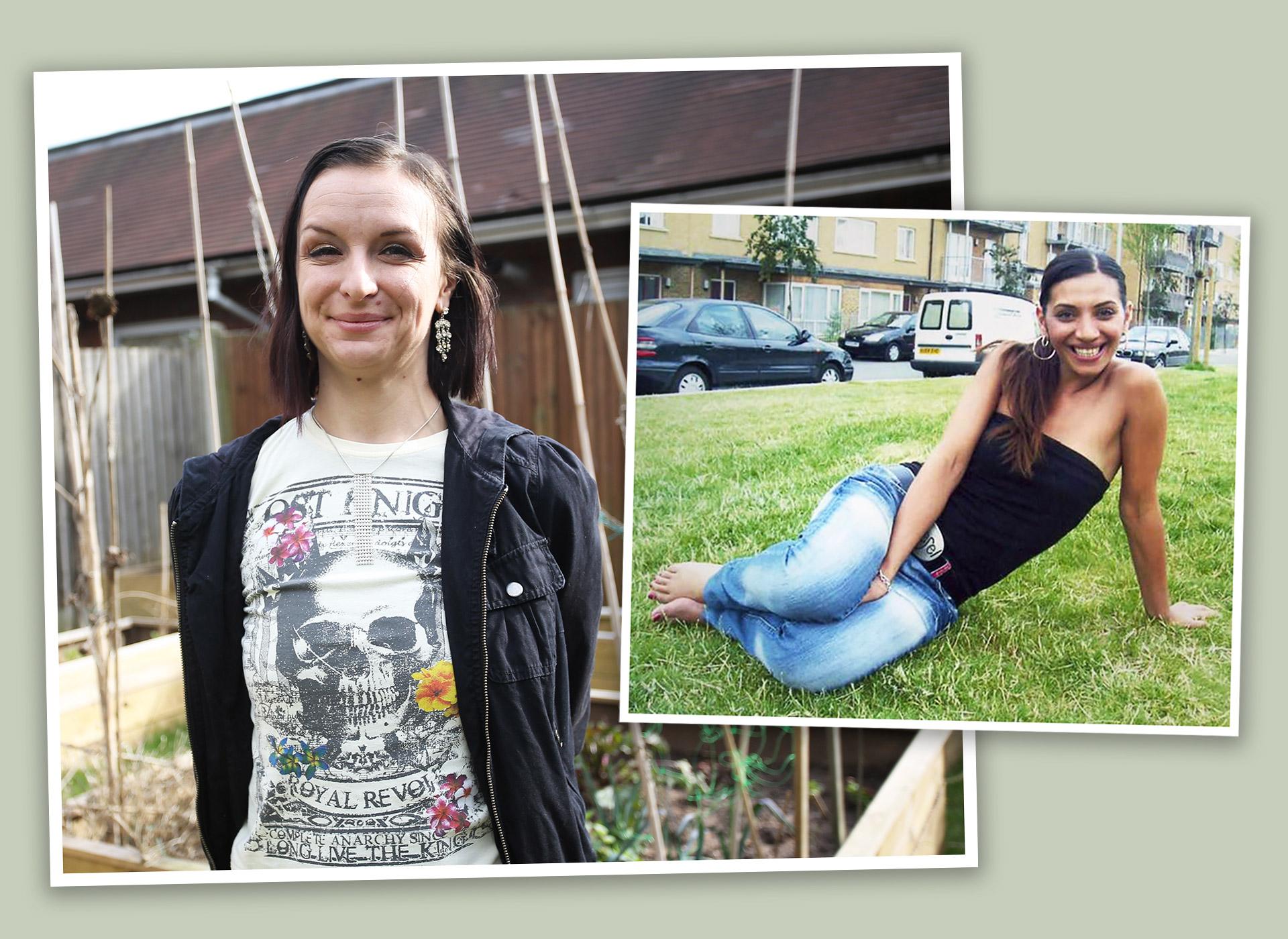
The bodies of Henriett Szucs and Mihrican Mustafa were discovered in the east London flat of Zahid Younis in April 2019. The BBC has investigated how the authorities cared for the women and dealt with their killer Younis - a convicted sex offender who has been sentenced to life in prison with a minimum term of 38 years.



Henriett Szucs believed in love.
She spoke about it. Wrote about it.
"Let me tel you something about how I feel for you!!! Really love you and I mean it!!! Bottom of my heart, to the stars and back!!! I didn't wana loose you, and I won't [let] that ever happen!!! This is true!!! Just wana LOVE you!!!"
In return, she received very little.
During her life in the UK she was brutalised, forced to work as a prostitute, and became addicted to drugs.
The pictures she drew were of a better world - butterflies, angels, a smiling woman in a flowing dress beside a fairy-tale carriage.


By the time these letters and drawings were found, Henriett had been dead for more than two years, murdered and locked in a freezer.
No-one had reported her missing.
Henriett - or Heni - was born in Hungary in 1984. In the late 2000s she left her homeland after the marriage with the father of her children ended. She spent time in Germany and came to the UK in 2012, working as a prostitute in east London.
The circumstances of her arrival in the UK meant she would later be regarded as a victim of trafficking.
After briefly returning home, where she gave a baby up for adoption, she moved to Birmingham in 2014 with a Hungarian man. But promises of work failed to materialise and he took Henriett's passport and birth certificate before abandoning her.
She found her way to London and into an abusive relationship, before she was made homeless and sought support at the Welcome Centre, a charity in Ilford. Manager Sonia Lynch remembers her as "always smiling, always cheery, despite the circumstances she was in".
She says that Henriett used to draw a lot. "I think maybe in her drawing that's where her pain may have been," she says.
"She didn't really speak much about the difficulties of rough sleeping and being homeless."
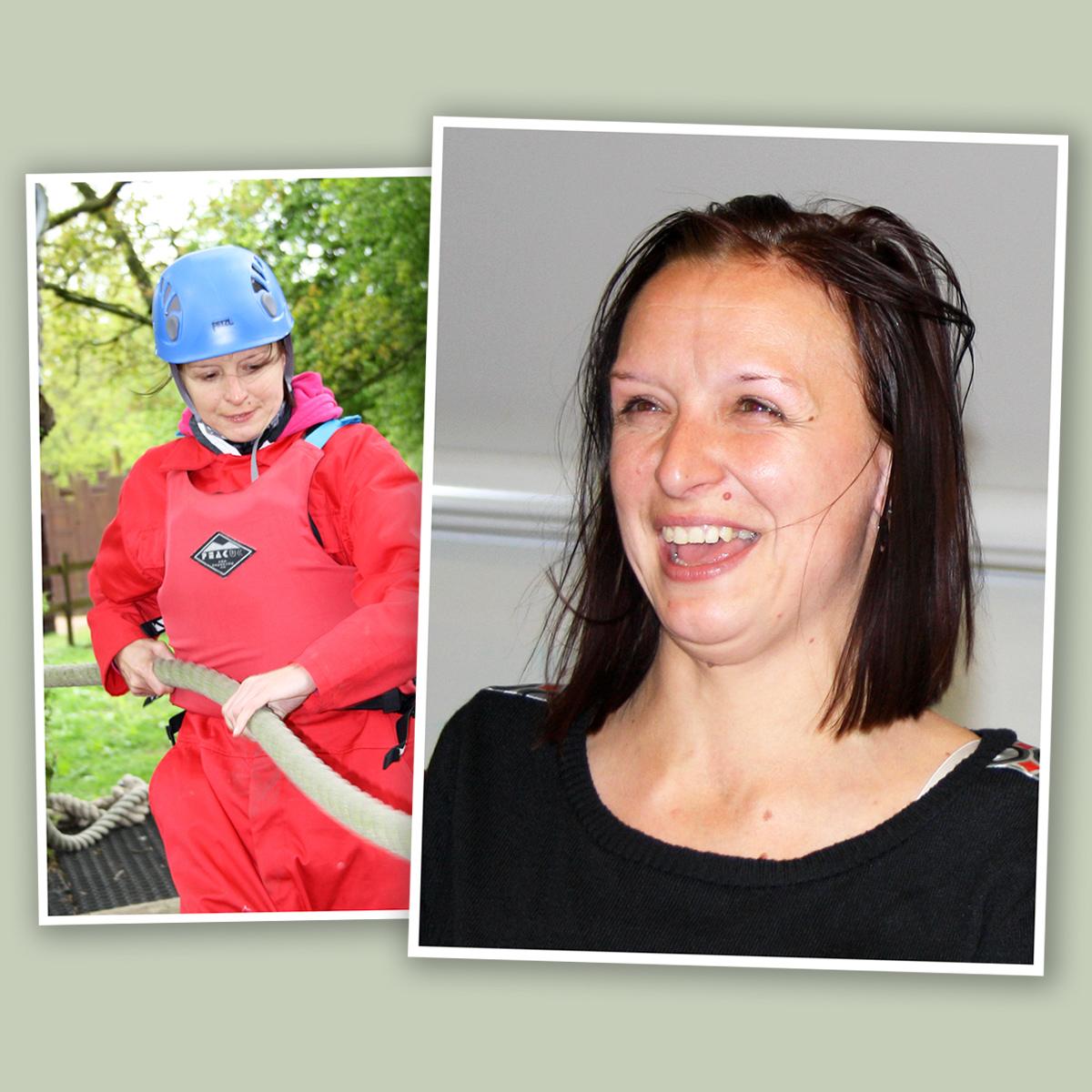
Sonia Lynch says that Henriett was "extremely vulnerable" and that she may have suffered mental health problems because of the "trauma in her life".
"But she didn't speak about it much, preferring to be on the positive side," she adds.
In early 2015, Henriett was pictured smiling in a local newspaper story about the charity and, as winter turned to spring, her future finally seemed positive. Henriett was enjoying group activities and looking to start a college course.
But, within months, she had come under the control of a violent man, who forced her into prostitution.
An associate who saw her one day thought she was barely recognisable. She was bruised and thin, seemingly addicted to intravenous drugs, referring to her "pimp" and saying she had been beaten up.
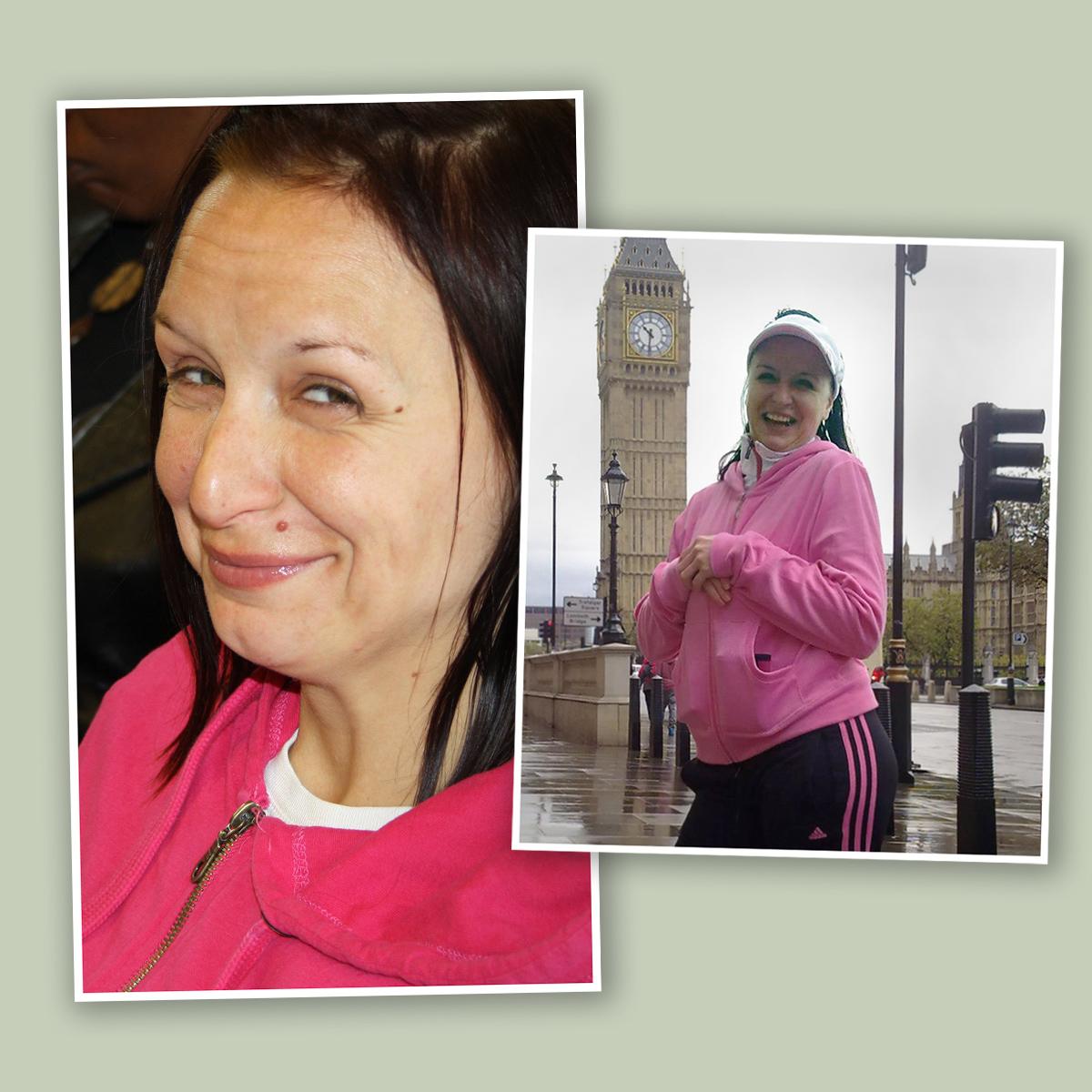
She had earlier, in February 2015, told the Met Police she had been raped by another man - a former partner called David Dallison, who was also arrested for assaulting her on four separate occasions. The Crown Prosecution Service refused to immediately authorise a rape charge, police say, meaning that Dallison was bailed. He was later charged with rape, but police then lost contact with Henriett and the case was discontinued.
In January 2016, Heni was admitted to hospital after falling from the balcony of Dallison's flat on the fifth-floor of an Ilford tower block. She suffered multiple injuries, including broken ribs and a fractured shoulder. She described a violent attack and Dallison was arrested on suspicion of attempted murder. At this point, the rape charge was reinstated and Dallison was remanded in custody ahead of a trial scheduled for the summer.
It was while Heni was in hospital that she met a fellow patient who she regarded as both kind and affectionate.



Moving in with the 'Boxer'
The man she met was Zahid Younis.
Henriett was moved to a safe house outside London for victims of trafficking and modern slavery, but she had become emotionally attached to Younis.
Staff heard her declaring love for "Zahid" during phone calls, and she made day trips back to the capital to see him. On two occasions, she returned so late that staff reported her missing.
The charity was told that her boyfriend - who was said to be talking about marriage - would let her move in with him, but that he did not want to give his address to the police or any other agency.
When she left a few weeks later, having insisted to staff at the refuge that her boyfriend did not have abusive personality traits, her destination - Younis's flat in Canning Town - was therefore unknown to them.
The drawings and letters found there after her murder chronicle an unfolding catastrophe.
Younis, nicknamed "Boxer" due to his love of the sport, was actually a convicted sex offender with a long history of violence against women.
He was being monitored by the police, who had classed him as a "medium risk" sex offender. But the danger he posed should have been clear to anyone aware of his past.

Henriett was known by the nickname Heni
Since his teens, Younis had been inveigling himself into women's lives by pretending to be charming and kind, before revealing his true nature and eventually taking them prisoner.
There is a long list of women and girls, most of them highly vulnerable due to their age or personal circumstances.
Henriett's writings between March and September 2016 show her initial feelings of love turn to harsh self-criticism as she is subjected to bullying by Younis. Eventually they would depict her despair and the violence he inflicted on her.
"So the day is today the day when you my love telling me the true about your love 4 me is really so deep. You gone Marry me or not???"
"Dear Zahid! Hope one day you gone wake up in a good [mood], not the boxing ring side".
"Will learn more to keep my mouth shut whe I need to listen, and talk up when I need."
"Boxer dosent want to know what Henriett wants."
"Keep distance away from Boxer. Follow the things point to point what he says. Give him space, and show him respect."
"Ma heart is broken...What I done so wrong in this Life?? I didn't make my self... Wasen't my choice to come a life...I did not say to my MUM} MAKE ME!!!"

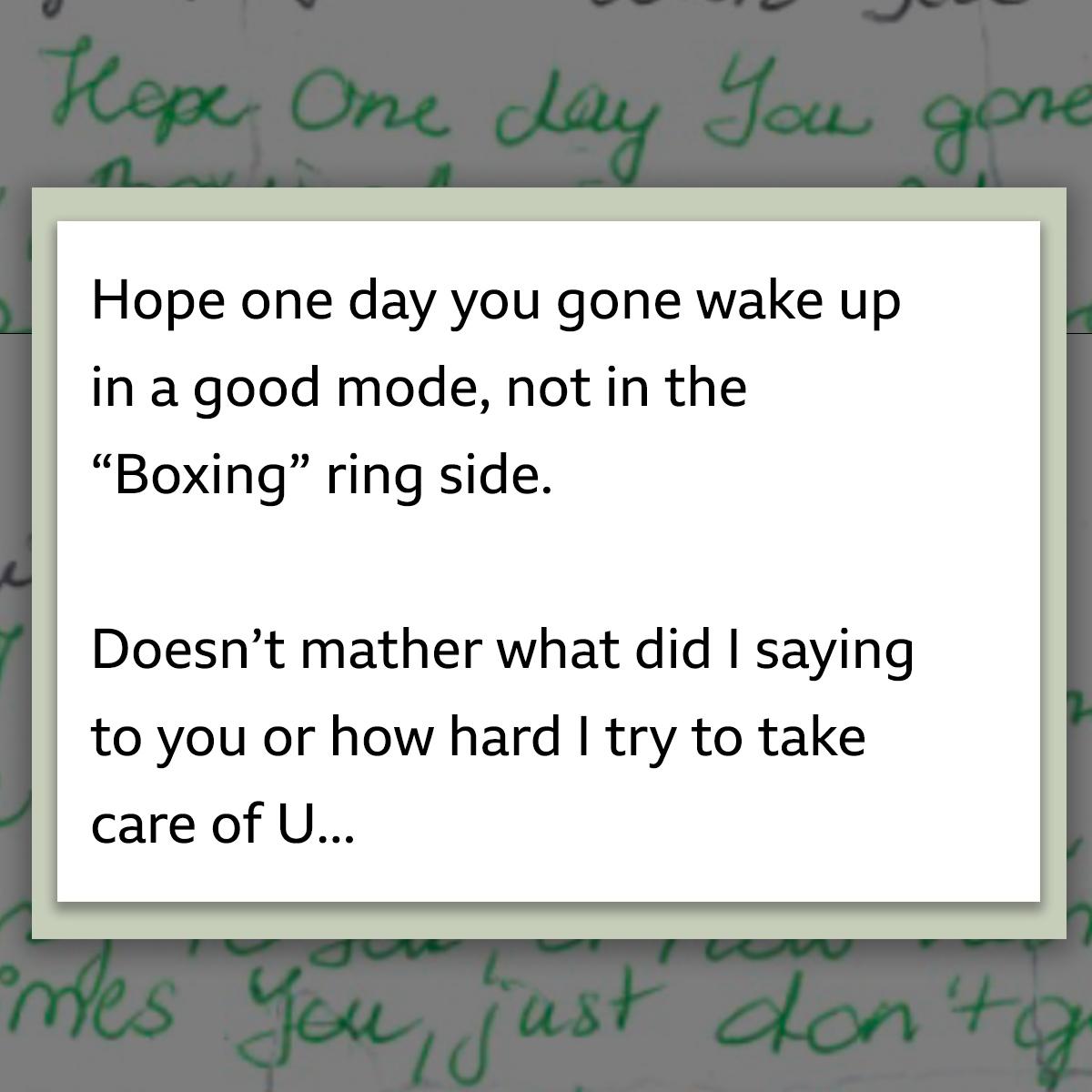
Excerpts from Henriett Szucs's handwritten notes
"How can love turn into hatred just like that? Everything you promised is no more than a shattered dream. I got disillusioned as a result of some really big slaps in the face!!! When I admitted my sins, you judged and expelled me from the inner circle and planted poison in my broken heart that was anyway stone-cold by then. This poison has been tormenting and burning me. I'm afraid of dying and I don't want to hate you!!!"
"The last night when I take this beat…"
People who had known Henriett previously in London did not even know she had returned to the city. Younis had isolated her and separated her from any sources of support.
In June 2016, David Dallison - the man charged with raping Henriett - was due to face trial at Snaresbrook Crown Court. But police had lost contact with her and the Crown Prosecution Service says that a judge refused an application to delay the case. Dallison, now 44, was released. A few days later - on what was meant to have been day one of the trial - Henriett texted an officer saying she was not well enough to attend. When the officer called back, there was no answer.
A document later found in Younis's flat suggests he dictated the excuses she was to tell the officer. By then, he was already abusing Henriett.
Despite police losing contact with a vulnerable woman, the last known sighting of her was by officers in east London in August 2016. On that occasion, she was briefly spoken to in the street while in the company of Younis, who received a penalty notice for cannabis possession.
No-one reported Henriett missing or went looking for her.
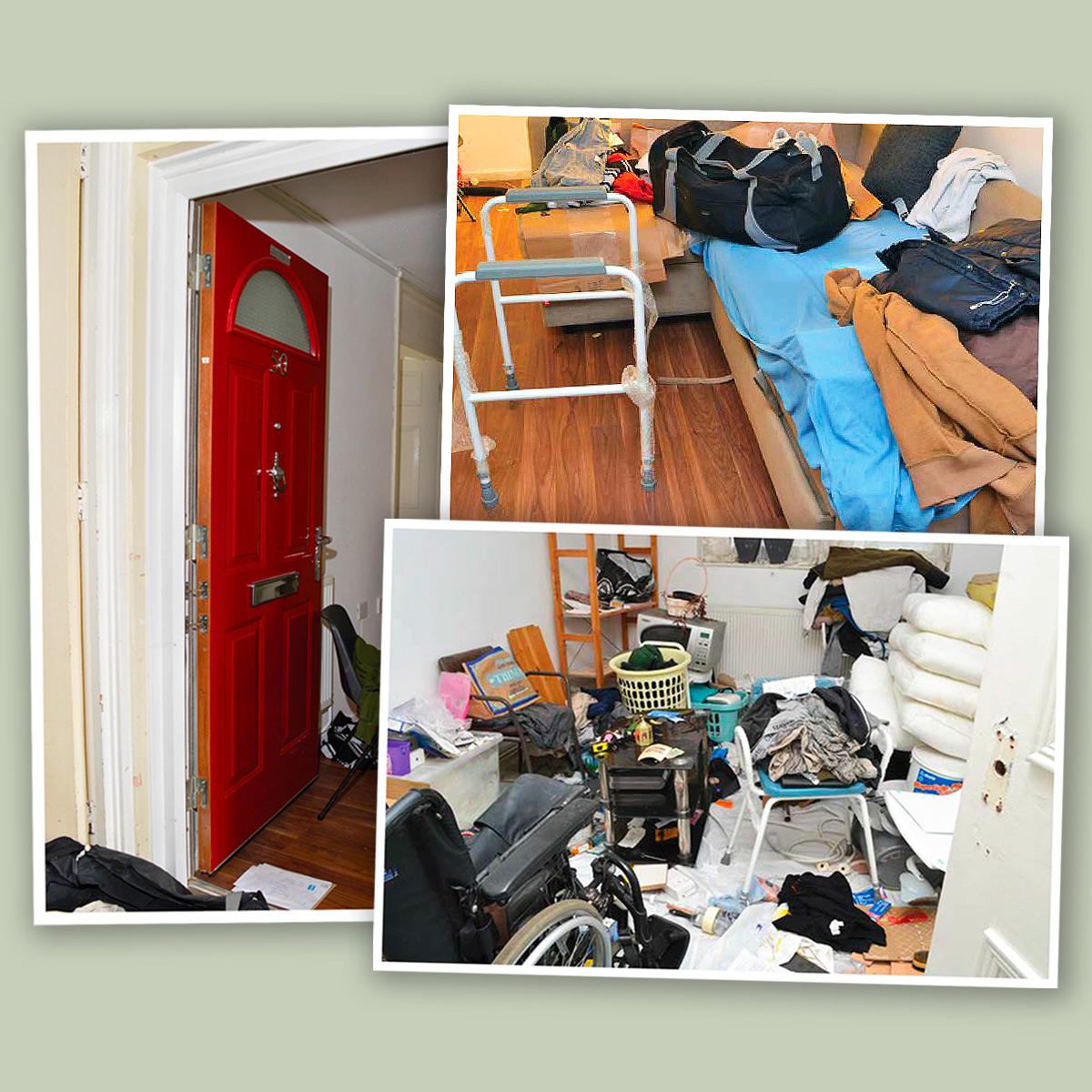
Soon afterwards, her writings also ceased. Scientific evidence shows she suffered serious violence over the following weeks.
By 11 November 2016, when Younis bought the large chest freezer in which he hid her body, Henriett was already dead, the victim of appalling violence.
Her killer had been monitored by police throughout the entire period she had been living with him. On 10 November, while Henriett's body lay hidden in a cupboard, two officers visited the flat to check up on the convicted sex offender.



Violent and controlling
Younis, 36, is a brash and arrogant figure, who would refer to himself as "Ali" after the heavyweight great. He promoted himself online as a singer/songwriter - in reality, he was a thief and con artist, who would work occasional shifts helping transport fruit for a market stall.
Police regarded Younis as a liar, as he failed to tell officers who were monitoring him about his sexual relationships, which - as a sex offender - they were obliged to ask him about.
But Younis was apparently confident that his lies would either be believed or at least help him avoid being held fully accountable.
His history explains why.
In 2001, a 16-year-old college student from east London met Younis, and later became pregnant by him.
At first he seemed "very attentive and paid me lots of attention", she told his recent trial, one of three victims to give evidence.
However, he soon changed, displaying "quite extreme paranoia about me looking at other men".
At one point, he locked her in a cupboard, only releasing her when she agreed to have sex with him. Another time, he violently attacked her while they were on an outing. He then phoned her mother, used obscene language to describe her daughter, and shouted that the teenager would be "lucky to get home".
This was the last time the victim saw Younis, until a couple of years later when he turned up at the flat she was living in with her child. On that occasion, he grabbed her by the throat and threatened to take the child to Pakistan.
Police were contacted and the woman was rehoused for her safety. But she didn't hear anything more from officers.
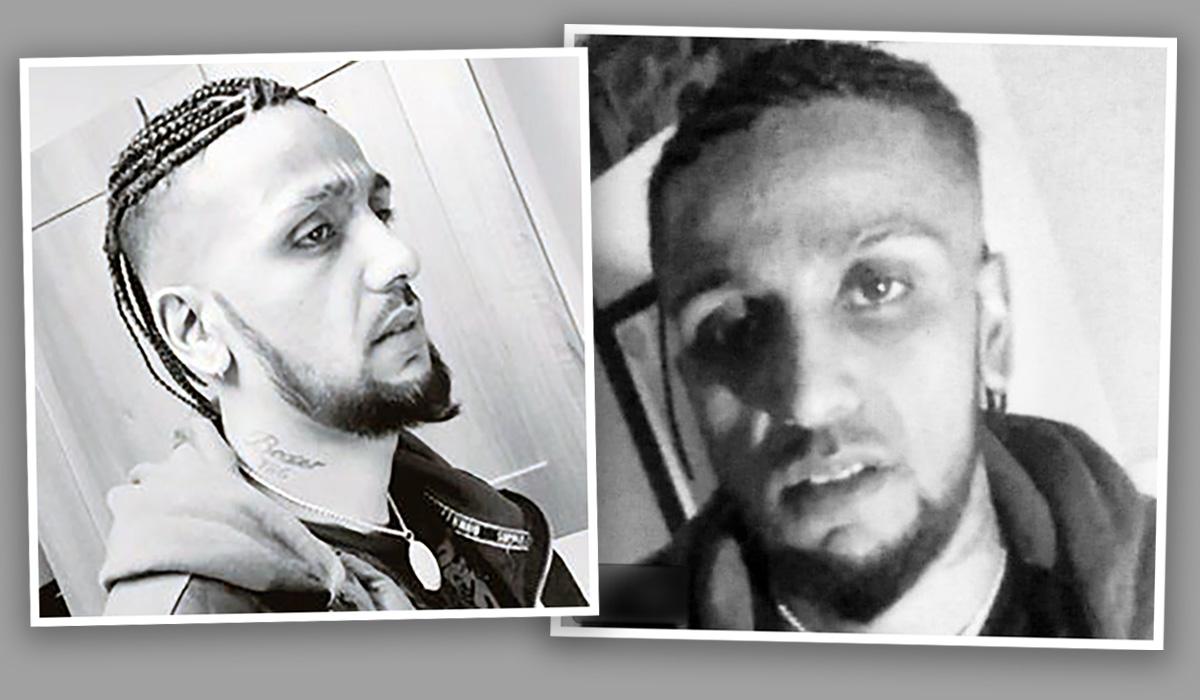
Around the same time, 19-year-old Younis started grooming a 12-year-old girl.
Within a year, he was sexually abusing her, locking her in his flat away from her parents, controlling her every move, and subjecting her to daily violence.
In 2004, when she was 14, they were "married" in an Islamic ceremony at an east London mosque. The victim - who is not from a Muslim background - told his recent trial she had no idea what she was being made to do.
"I don't understand Arabic so I didn't know what I was repeating," she told the court.
Asked why police were not called, she replied: "Because I thought he would get away with it."
The girl was reported missing by her parents and, that summer Younis was arrested and charged with assault, false imprisonment, and sexual activity with a child. But he was acquitted following a trial.
While on remand in prison he made phone calls to his young victim, whom he began sexually abusing again straight after being released. He continued to beat the child, even after she became pregnant.
When she made a fresh complaint to police, Younis was charged with a string of offences relating to both the victim and a separate young teenage girl.
However, the BBC has established that at his ensuing trial in early 2007, Younis was able to avoid conviction on 26 charges. After the second girl had given evidence, the judge directed that Younis be cleared of several offences relating to her and the prosecution offered no evidence on the others - 20 offences in all.
Younis had pleaded guilty to one sexual offence and one assault against the other victim, with four further charges of false imprisonment ordered to lie on file when the trial was stopped, meaning he was released shortly afterwards, when time on remand was taken into account.
Younis then agreed a plea deal in relation to his next victim, it can be revealed, despite the girl being subjected to even more extreme levels of violence.
Shortly after being released from prison, the convicted sex offender met a 17-year-old and quickly moved himself into her flat.
"At first it was okay and then it was not nice - it was nasty and it was evil and I was trapped," she told the recent murder trial.
He isolated the teenager, stopped her from leaving the flat and hovered nearby whenever others were present.

For information and support on domestic abuse, contact:
Police: 999 press 55 when prompted if you can't speak
Refuge UK-wide 24-hour helpline: 0808 2000 247
Welsh Women's Aid Live Fear Free 24-hour helpline: 0808 80 10 800
Scotland National Domestic Abuse and Forced Marriages 24-hour helpline: 0800 027 1234
Northern Ireland Domestic Abuse 24-hour helpline: 0808 802 1414
Men's Advice Line 0808 801 0327
Online webchats and text services are also available.

The violence and rapes were sadistic, constant and systematic.
She was attacked with knives, hammers, and a barbecue fork. She was burnt with a lighter, suffered a catastrophic triple arm fracture, and was rendered unable to walk after being thrown from a window to the street below.
The young woman, who was from a Muslim home, had not previously chosen to wear religious clothing. But she began wearing a burka to hide her increasingly damaged body. She refused to take it off even when she was with her mother and sisters.
Younis threatened to kill her family and distribute videos of her being sexually abused if she told anyone about his violence.
Her mother, increasingly worried about her, went to the flat and managed to get her daughter back to the family home. The police were then called.
"In my heart I kept praying... I felt like God answered my prayers and my mum came to my house," the woman recalled at the murder trial.
Through tears, her sister told the court that when the burka was removed, it was "the worst image I've ever seen in my life".
A medical examination at the time recorded more than 70 different injuries.
Despite all of this, Younis eventually agreed to admit three offences - grievous bodily harm, assault occasioning actual bodily harm, and unlawful wounding - but only on a reduced basis. The rest of the charges were left to lie on file - including rape and sexual assault - although the indictment has since been lost.
His victim was only informed after the deal had been agreed.
In 2008 Younis was sentenced to less than five years in prison, after the judge accepted the basis of his pleas. In other words, the judge accepted Younis's version of events.
Another teenage girl had described remarkably similar violence when she spoke to police six years earlier - false imprisonment and attacks with a hammer and crowbar. No further action had been taken.



Another disappearance
Mihrican Mustafa, known as Jan or MJ, was a mother of three in her late 30s from east London.
Her cousin Ayse Hussein says she had a "heart of gold" and would "do anything for anyone".
She became increasingly vulnerable as a result of her addiction to drugs.
Her sister Mel told the court that, as a consequence, Jan just wasn't herself anymore. She "had no confidence left".
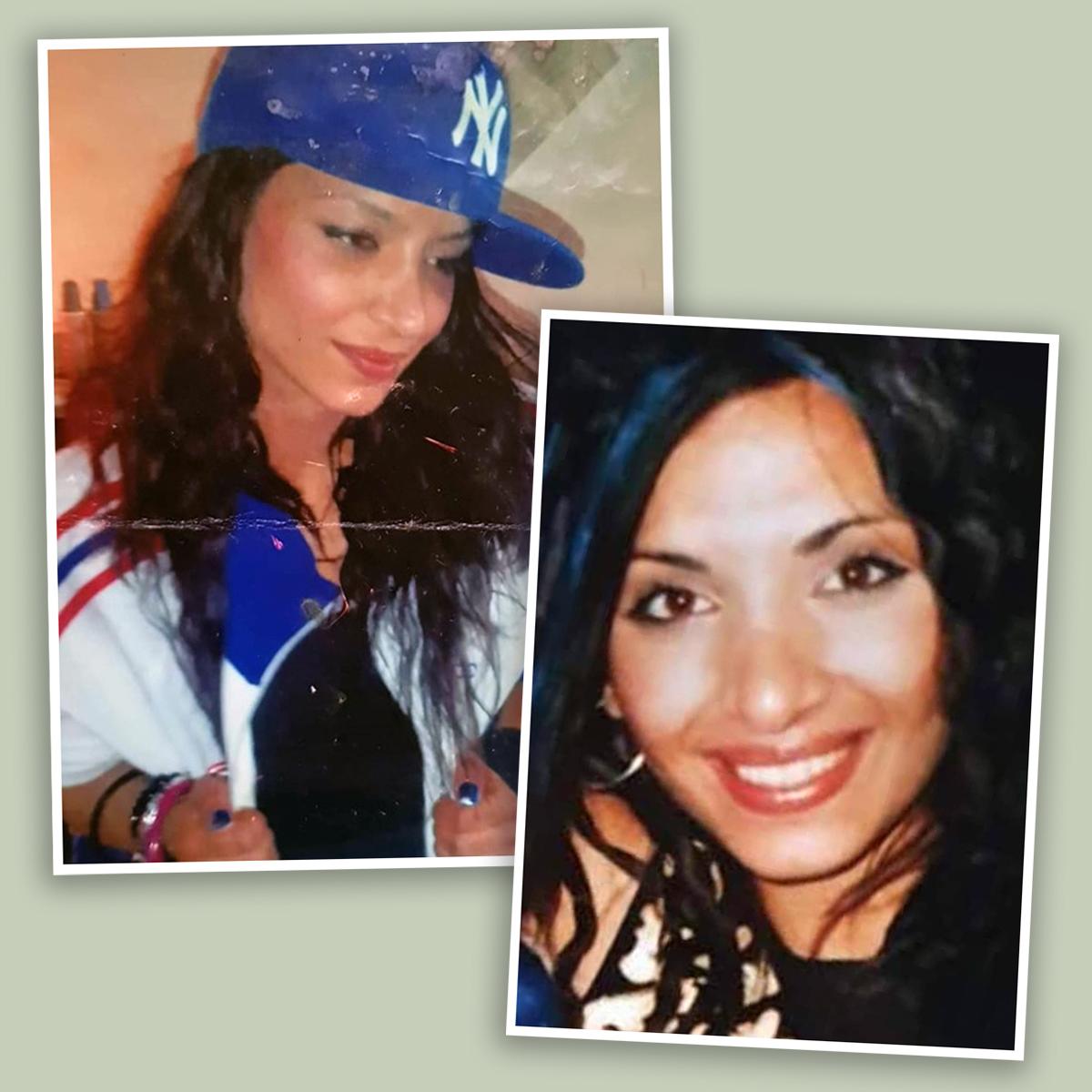
Her addictions meant she came into contact with local criminals. Zahid Younis was one, and he came to be an associate. He lived near Jan and some of her family.
Locals who were later questioned by homicide detectives recalled seeing them together, and there was also mobile phone contact between the pair.
In early May 2018, her family saw her for the last time at her mother's home. She then vanished.
Within days, she was reported missing by her worried family.
They were appalled by the missing person inquiry, which is now the subject of an internal Scotland Yard inquiry.
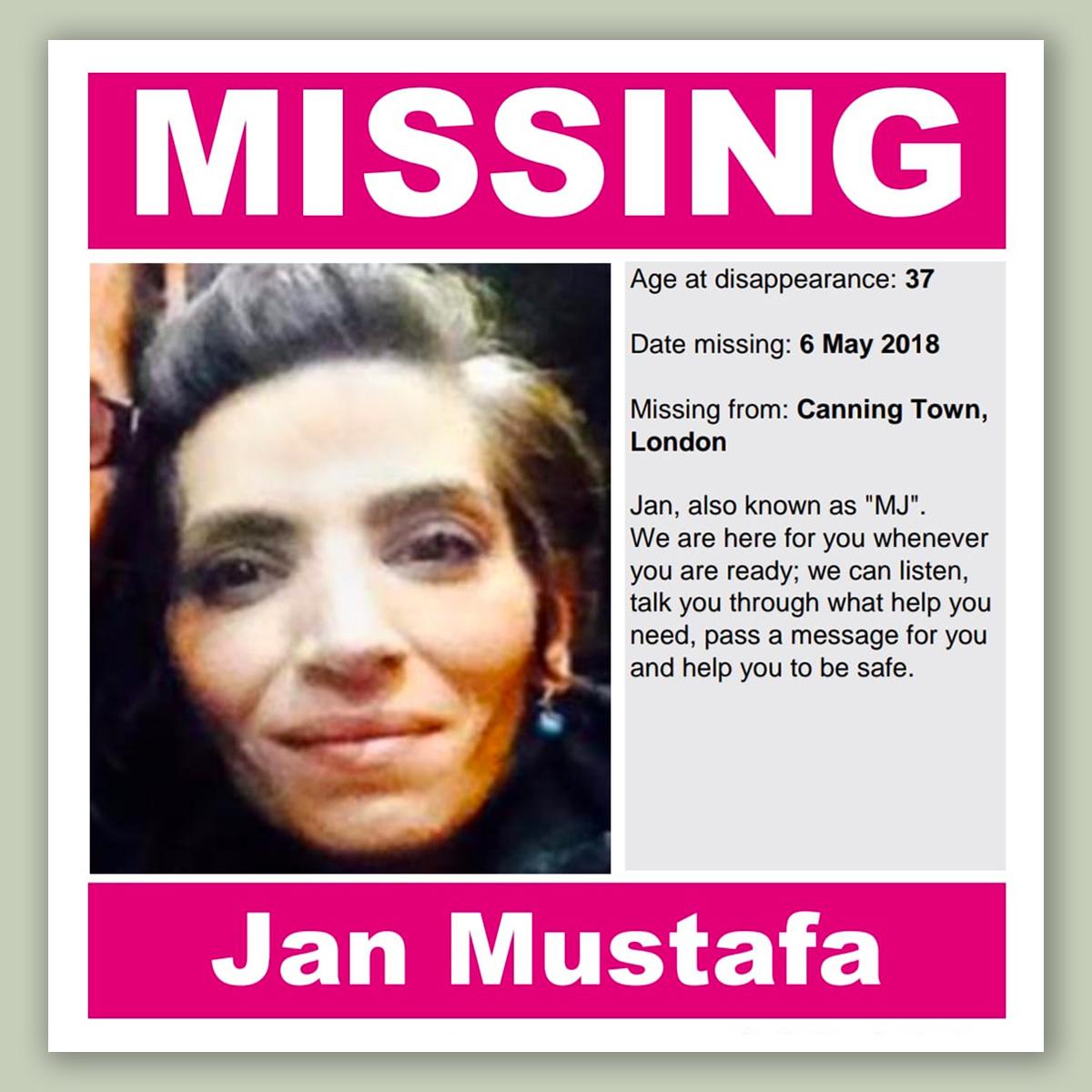
The Mustafa family conducted their own investigations and appeals for information, followed up potential sightings themselves, and tried to generate media coverage.
Evidence passed to police by the family appears not to have been fully examined, including Jan's old mobile, which would have shown that she had been in contact with Younis in late April - on the last day the phone was used and just before she went missing. Phone data relating to her number, by then using a new handset, would have shown further contact with Younis into early May, and that her phone had last been used in an area that included the killer's flat. When it was eventually searched, the handset was found there.
In July 2018, officers responsible for monitoring Younis visited his flat and asked him about Jan, whom he admitted knowing but only through a friend. He was told that if he saw Jan he should report it.

Police were not only regulars at the property to monitor Younis, but he also persistently called them himself to complain about a range of issues. He contacted them at least 26 times.
He even spent time in jail at the end of 2018 for assaulting an officer.
Throughout all these calls, visits and investigations, the bodies of Jan and Heni were in his flat, hidden in a freezer.
They were only discovered by accident.
Younis had befriended an elderly Christian woman. He lied to her constantly in order to obtain money from her - on one occasion texting her to declare: "I only have you and the Lord Jesus".
But in April 2019, after he failed to contact her for a few days, she reported him to the police as a missing person. Officers then went to his flat to check on his welfare. They gained entry through a window and, coming across a locked freezer in a cupboard, opened it out of concern for Younis.



The trial
The ensuing murder investigation ranged across Younis's years of abuse.
During his trial, he was very far from an accomplished liar. He was rambling and offered inconsistent explanations, which involved him blaming other people for what had happened. New claims were added to his stories every time evidence was produced to disprove one of his lies.
Younis described himself as a "decent guy" to jurors, but his aggressive misogyny was on full display.
He told the judge Mrs Justice Cheema-Grub that she was "arrogant" and shouted abuse at one of his victims while she was giving evidence.

Police at Younis's flat
How could such a man abuse so many women over such a long period of time - going on to murder two of them - and only now be held fully accountable?
Yvonne Hall of the Palm Cove Society, which supports victims of domestic abuse and trafficking, says that to help "prevent such atrocities" in future, services that work with vulnerable people "must ensure contact with those individuals are maintained after they leave service".
She says they must "work collaboratively to maintain contact with vulnerable individuals - especially those designated as hard to reach".
Lisa King, from domestic abuse charity Refuge, describes the case as "horrific" and said that Younis engaged in a "reign of terror".
"The system failed the victims when it should have protected and supported them. We know that men who perpetrate domestic abuse do so serially, preying on victim after victim, their violence and abuse increasing in frequency and severity over time - tragically culminating on this occasion in the deaths of Henriett and Mihrican."
"Whilst Zahid Younis is responsible for his violence, we must also look to the agencies and individuals which have a statutory and moral duty to support and safeguard women and uphold our criminal justice system. Vulnerable women should be protected - not dismissed because they have 'complex needs' or are seen as 'hard to reach'.
"Why weren't the agencies and the professionals who have a duty to protect all women trained to spot the signs and support these women - how could they be left as missing and vulnerable to fall through the cracks? Why wasn't Zahid Younis being monitored given his history of violence and abuse? Why wasn't he identified as high risk? State agencies must ask these questions to learn the lessons to ensure women are protected and justice is done."
In response to questions from the BBC, Scotland Yard said "extensive enquiries" were made to try to locate Henriett before the trial of the man charged with raping her. Regarding the missing person inquiry for Jan Mustafa, the force said, "Various lines of enquiry were conducted" and that an internal investigation by its professional standards directorate is ongoing. "No officers are currently subject to restrictions," the force added.
Asked for comment on its monitoring of Younis, given what he did while being monitored, the Met said he had been managed in accordance with policies, and that all visits and risk assessments were completed "as per protocol". The Yard continued: "Offender managers responded promptly to all information relating to Younis and recorded their actions and decisions."
The Crown Prosecution Service said that decisions relating to the earlier prosecutions of Younis were taken in line with the "code for crown prosecutors".
Among the items found in Younis's flat were poems by both the women he murdered.

Jan:
Let me tell you something I already know.
The world ain't all sunshine and rainbows
It's a very mean and nasty place
I don't care how safe u r
It will beat you 2 your knees
Permanently if u let it

Henriett:
Once again I opened my heart and once again the cracks are falling apart.
Little movements I can see now I kno it's only me,
but Im not as shocked as I used to be.

Empathy, sensitivity and love. What the women came into contact with was not just impervious to such things, but the antithesis of them.
An antithesis whose threat should have been well known.
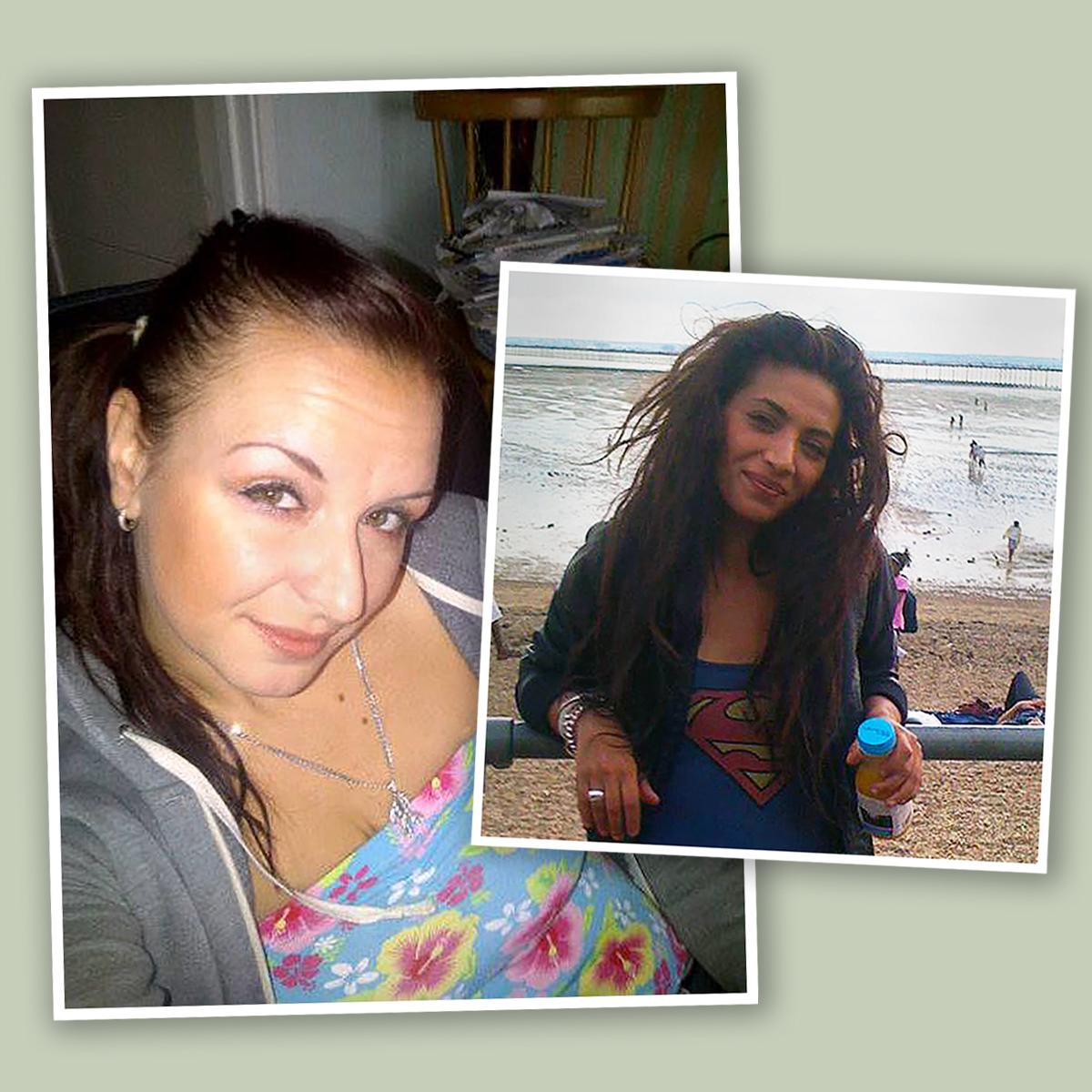

All images subject to copyright.
- Published30 July 2020
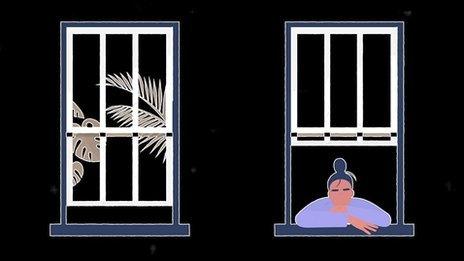
- Published17 August 2020

- Published6 September 2019

- Published19 July 2020
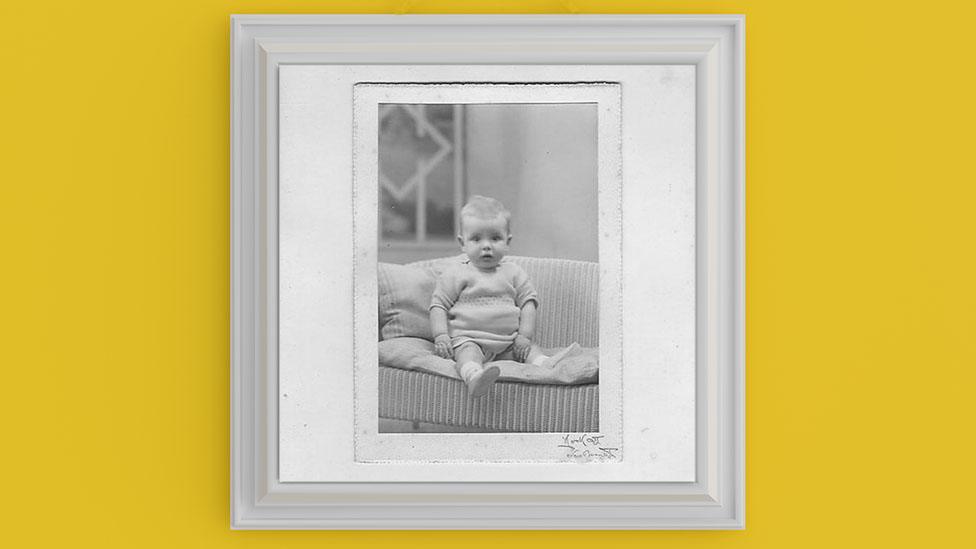
- Published13 July 2020
